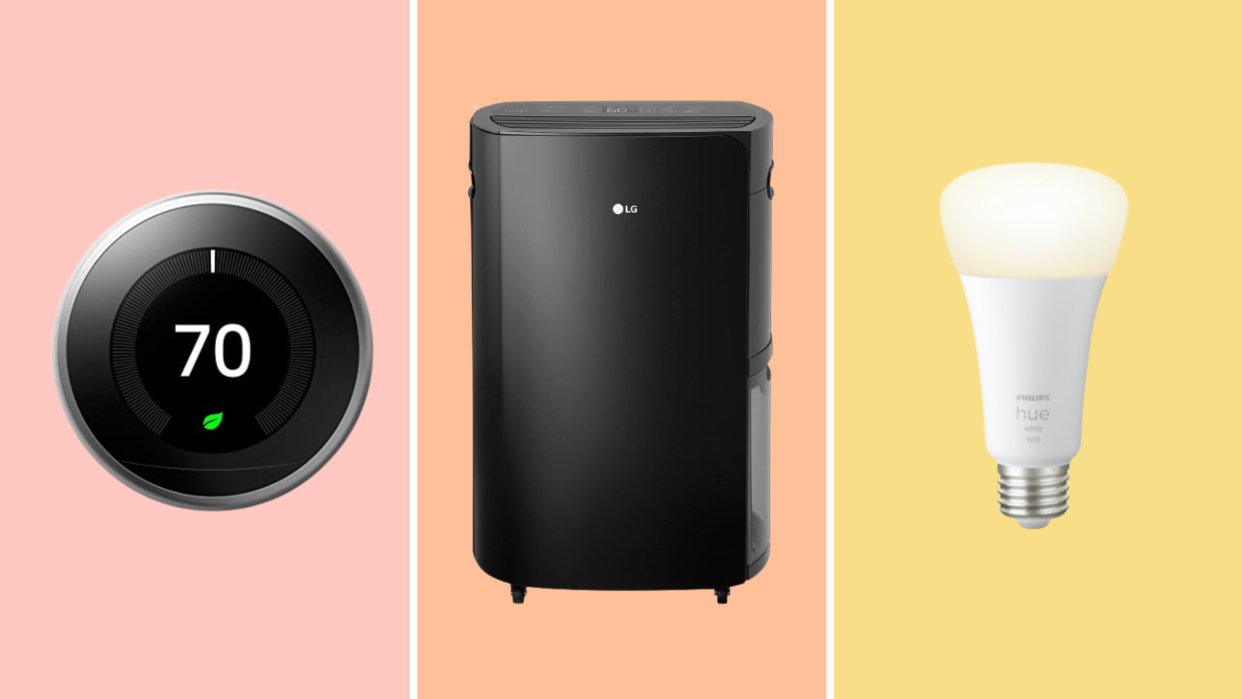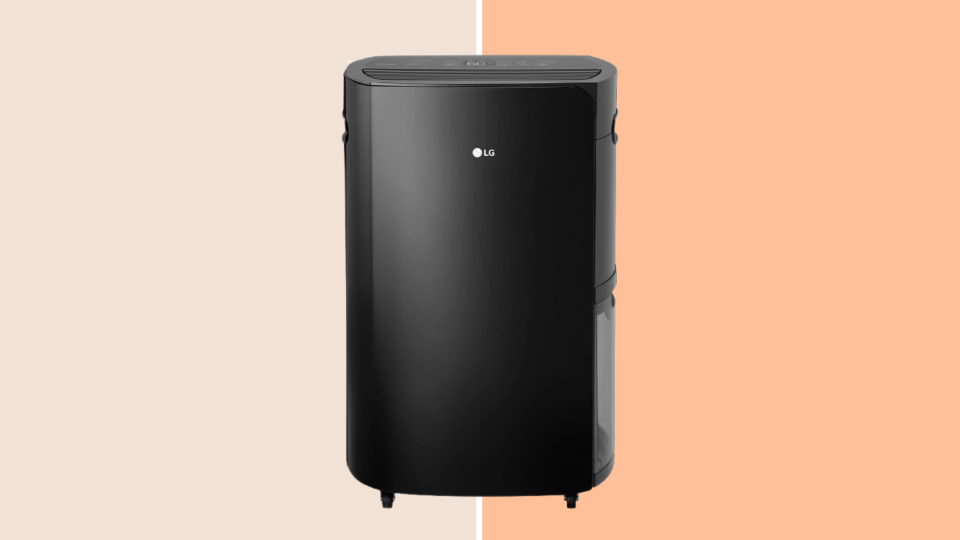Why is my electric bill so high? 13 ways to lower it

— Recommendations are independently chosen by Reviewed's editors. Purchases made through the links below may earn us and our publishing partners a commission.
Word is out, and it looks like electricity prices aren’t coming down anytime soon.
Post-pandemic inflation can be staggering; you won’t be alone if you find yourself in the grocery store bread aisle shaking your head in disbelief and wondering when prices will go back to normal. While there is some hope for easing inflation in the general U.S. economy, there’s a multitude of reasons conspiring to keep energy prices high.
Make smart choices without hours of googling. Subscribe to The Checklist newsletter for expert product advice and recommendations.
You may be wondering, "Why is my electric bill so high?" While the price of electricity isn’t coming down, there are steps you can take to lower the costs at home.
On average, American households spend about $117 a month on electricity bills. But that doesn’t have to be you. If you’re looking for how to lower your electric bill, here are 13 ways to start.
1. Save on electricity bills with a smart thermostat

Swapping out your old thermostat for a smart version is the easiest way to make your home’s HVAC unit more efficient, says Clint Robertson, home improvement expert and American Standard Heating & Air Conditioning partner.
This change can help you shave as much as 10 percent to 12 percent off your heating bills, and up to 15 percent on cooling.
If you’re in the market for one, we recommend the Nest Smart Thermostat (third-gen).
If you can’t budget an upgrade at the moment, your current one will still most likely have handy programmable settings you can use, like the ability to turn down the heat at nighttime when you’re comfy under your favorite comforter.
2. Look for the Energy Star label

Energy Star is a labeling program developed by the U.S. Department of Energy and the Environmental Protection Agency. To qualify for the label, appliances must meet or exceed minimum efficiency ratings.
Look for the designation on everything from kitchen appliances to water heaters and pool pumps. The label includes an annual cost-of-use estimation, which can help you budget realistically, keep your utility bills down and reduce your energy use.
Washers and dryers, for example, are one of the biggest energy suckers in homes. Our favorite top load set, the LG 1042524 delivers Energy Star standards.
$2,298 at Appliances Connection
3. Seal and insulate your home
In the winter, much of the air moving through your home is lost to air leaks and poor insulation. That leakage can raise your heating and cooling bills and make your home less comfortable.
Weatherizing your home, which involves sealing and insulating, can help plug the leaks and save 10 percent on your energy bill every year.
Look for leaks in the attic and basement, where the air most commonly escapes. Throughout the house, install weather stripping around doors and windows, and fit caulking around outlets and pipes to further lower utility costs.
4. Save energy with smart plugs

These days most electronic devices use a significant amount less energy in standby mode than they used to, around 90 percent or more in many cases.
However, that doesn’t apply to certain older devices and some classes of newer units. One of the best tools we have to control how much electricity our home is using is the smart plug.
Smart plugs aren’t just for turning on and off hard-to-reach strands of Christmas lights with your voice (though that is a very cool feature).
These plugs empower you to schedule all the devices and lights in your home, ensuring that lights turn off while you’re out of the house or scheduling the AC unit so that it doesn’t go all day.
Use a great smart plug like a two-pack of Wyze Plugs strategically and you could reinvent how your home’s energy usage… and how much you pay each month.
5. Install a greener ceiling fan

Ceiling fans are always better than AC when you’re looking to save money on electricity. However, some ceiling fans are better than others.
New ceiling fans like the Haiku L Smart Ceiling Fan are one of the best ways to save money cooling a hot home.
Exceeding the Energy Star Efficiency requirements with aplomb, the Haiku is extremely energy efficient and extremely good at cooling.
It also syncs with your smart home ecosystem so you can schedule when it comes on and off, or start it cooling right before you get home.
6. Update your AC and filters
Regularly changing your air filters every 30 to 90 days “helps your HVAC operate properly rather than work overtime,” Robertson says.
The advice applies for portable AC units as well as classic window units. Replace these filters at least every three months for max efficiency, money savings, and improved air quality.
If it’s time to upgrade your AC unit entirely, we recommend the Energy Star rated GE Profile, which did the best overall job in our tests for its combination of energy efficiency, cooling quality and design.
7. Upgrade to smart blinds
About three-quarters of the sunlight coming through your windows is transferred into heat, which can make your air conditioning work harder in the summer. But Robertson says one simple trick to save on utilities can help you beat the heat.
“Closing windows, drapes and blinds during the day—and opening them again when the sun goes down—is an easy and affordable way to help keep the house cool at all times,” he says.
You can even take it a step further with smart blinds, which are motorized shades that automatically adjust and can open and close on a set schedule. Serena by Lutron is a good place to start.
8. Get an HVAC tuneup
Energy Star suggests hiring a contractor once a year to service your HVAC system. The tuneup can cost up to $450, but it's worth the price tag because it helps the HVAC system run efficiently and keep utility bills in check. It can also lengthen the life of your HVAC, which costs about $5,500 to replace.
But, “if the system is more than 10 years old, consider what you'd save in a full replacement,” Robertson says.
Repairing your air conditioning system, for example, could cost up to $1,500.
Meanwhile, a new, energy-efficient HVAC system can help lower your energy bills and provide better air flow.
9. Change out light bulbs for smart bulbs

Switching to energy-efficient light bulbs is one of the easiest ways to cut your energy bills. Although halogen incandescent, CFL, and LED light bulbs cost a bit more upfront, they help you save money in the long run because they use less energy compared to traditional incandescent bulbs.
Shop for these light bulbs with the Energy Star label, and you can save up to $45 each year.
We’ve ranked our favorite smart light bulbs, the Philips Hue LED bulbs, No. 1 because of its uncomplicated setup and easy-to-use app. These smart bulbs offer features like geofencing and remote control, so you'll never accidentally leave the lights on again.
10. Check for state energy saving programs
Plenty of state and local programs offer money-saving incentives and ways to make your home more energy-efficient.
To check out initiatives near you, head to the Database of State Incentives for Renewables & Efficiency and plug in your ZIP code.
Depending on your location, you may find tax credits, grants that don’t need to be repaid, loan programs, and energy audits. In Massachusetts, for example, the Mass Save program connects homeowners with energy experts who visit your home and identify ways you can save energy.
The program grants you access to free stuff like energy-efficient light bulbs, power strips and shower heads.
11. Reduce humidity

While humidity can make any outdoor activity unpleasant, it also wreaks havoc inside the home.
“A humid house will make the air conditioning work harder and won’t be easy on the utility bill,” Roberston, who's also a co-host of HGTV show Boise Boys, says. Plus, humidity promotes rot and mold, which can lead to poor air quality, unsightly stains and bad odors.
Robertson recommends keeping your house at 30 percent to 50 percent humidity with these few steps:
Take shorter showers with cooler water. (One of these bathroom gadgets helps you control the temperature.)
Cover pots and pans while cooking.
Use dehumidifiers, which cost less than cooling the house.
We tested dehumidifiers, and our favorite, the LG Puricare, reduced the amount of humidity by nearly 50 percent in about an hour and a half during our lab tests. It’s also easy to move and store, and uses the least amount of energy of all the similar models we looked at.
12. Replace older appliances
It might not be intuitive that splurging for a new refrigerator could prove to be a value purchase that saves you money in the end.
However, appliances have come a long way in the last 10 to 20 years in how much energy they use.
While purchasing a new fridge could cost you a significant sum up front, it could also save you $300 a year in energy costs, which adds up to quite a lot in the long term.
We found the Hisense 17.2-cu ft Counter-depth Bottom-Freezer Refrigerator to be especially good value and efficiency, with an Energy Star award certifying its electricity savings.
13. Switch to more energy efficient tech
There are always more little ways to save on electricity around the home. That might involve throwing an extra blanket on the bed, or it might involve opting into the newest generations of energy saving technology.
If you’re trying to revolutionize your home, check out our guide on more tech for an energy efficient home here.
The product experts at Reviewed have all your shopping needs covered. Follow Reviewed on Facebook, Twitter, Instagram, TikTok or Flipboard for the latest deals, product reviews and more.
Prices were accurate at the time this article was published but may change over time.
This article originally appeared on Reviewed: Here's how to lower your electric bill as prices skyrocket


